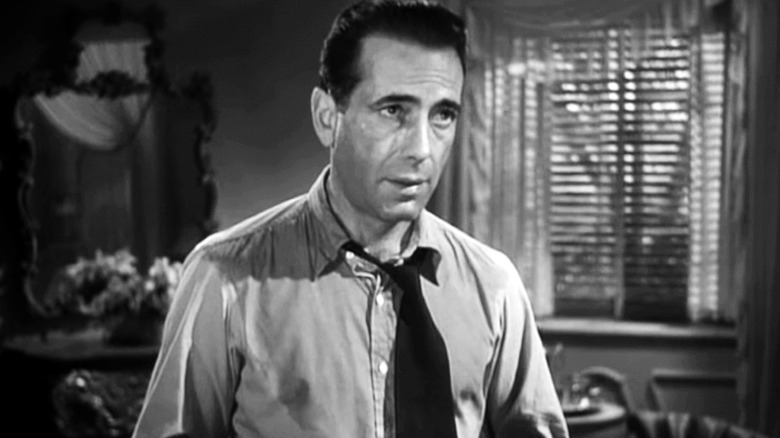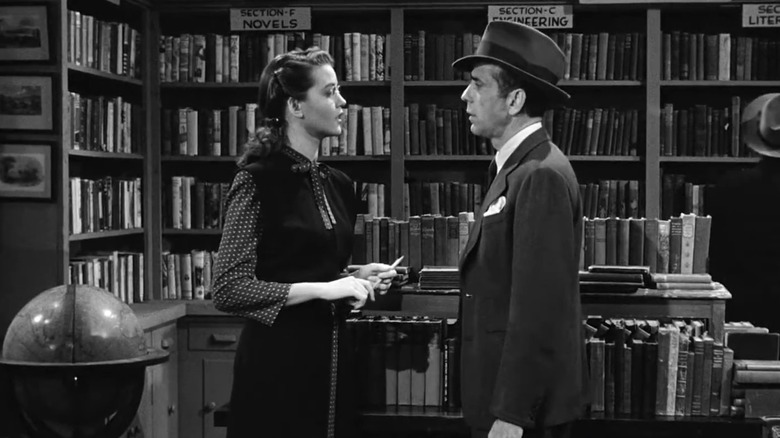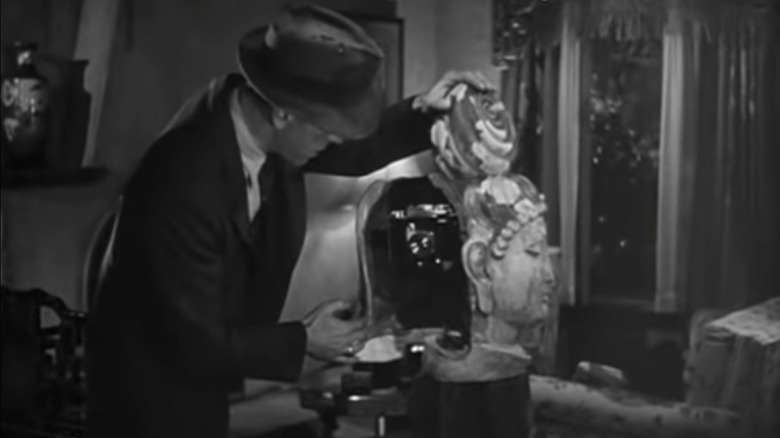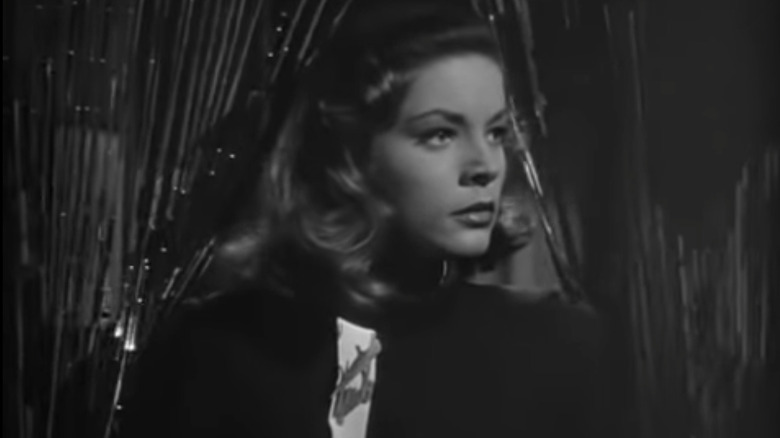The Big Sleep Was Smart To Cut A Major Humphrey Bogart Scene
There's nothing quite like film noir. The villains are suave, everyone's double-crossing each other, and the detective's always walking through a foggy, corrupt world, seemingly the only person with even a begrudging shred of morality. Happy endings aren't guaranteed, nor is anyone's sincerity. And we, like the detective, have to stumble through a world that's determined to keep us blind.
While some film noir movies have inevitably been more influential than others, few seem to have made as big of an impact as "The Big Sleep," which sees Humphrey Bogart play iconic detective Philip Marlowe as he attempts to make his way through a tangled web of crimes. Few film noirs are more confusing, either. "The Big Sleep" is notoriously convoluted, and truth be told, its title is fitting simply because if you happen to snooze off for a moment, you may as well sleep through the rest of the movie.
Even if you do watch the whole thing, there are so many twists and turns that your head will inevitably spin. And that's not even accounting for the fact that no one — including the film's crew and the story's author, Raymond Chandler — knew who committed one of the murders. Yet that's the film's beauty: you're forced to come along for the ride, and what a ride it is.
Making things easy for viewers ... or not
The version of "The Big Sleep" that we know and love today is relatively demanding of viewers, but the film wasn't always so cruel. According to Cinephilia & Beyond, director Howard Hawks had initially shot a scene where Bogart simplifies the tangle of crimes and betrayals. The scene was included in the movie's 1945 premier, but had disappeared by the 1946 re-release, which also featured several major changes. Cinephilia & Beyond states that Hawks cut the scene as he preferred for viewers to put the pieces together themselves — a frustrating move, yet one that ultimately enriched the film.
While most directors might prefer to keep their movies as easy to understand as possible, Hawks' experiment in "The Big Sleep" paid off. He later told Sight & Sound that the film was successful because it "had great scenes in it and it was good entertainment" and that "[a]fter that got by, I said, 'I'm never going to worry about being logical again'" — a strategy that fell neatly in line with the director's knack for hilarious scenes. And indeed, "The Big Sleep" is definitely filled with entertaining banter. But it's the mystery that keeps you hooked, even if you aren't quite sure whodunnit by the end.
Beauty in the chaos
By refusing to let viewers take the easy way out in "The Big Sleep," Hawks put them in the detective's seat. They aren't just watching some schmuck detective fumble around, trying to find the truth — they are the detective, desperately trying to piece together what's going on around them (and if they can't, at least they'll sympathize with the schmuck). Sure, the cut scene may have brought some clarity, but in the world of film noir, detectives can never rely upon clarity. Why should viewers be spoiled?
As it turns out, Chandler approved of the end result. Although the novelist was famously critical of lots of big movies, he liked Hawks' treatment of "The Big Sleep," saying that the movie showcased "what can be done with this sort of story by a director with the gift of atmosphere and the requisite touch of hidden sadism." Sure, the compliment was in part self-praise (you've gotta love an author who compliments his own writing before the adaptation that he's supposedly praising), but the "touch of hidden sadism" bit certainly points to Hawks' insistence on maintaining the plot's obscurity. The beauty behind the confusion wasn't lost on the acclaimed mystery writer, even if the plot was inevitably lost on more than a handful of viewers.
Bogart's cut exposition wasn't the only change
While the exposition scene was probably the most frustrating omission from the 1946 re-release, it's far from the only change made to "The Big Sleep." While there are lots of smaller swaps — different camera positions, relatively minor details altered — there's also another big adjustment: Marlowe's relationship with Vivian Rutledge (Lauren Bacall), his client's eldest daughter, is given more importance. Likewise, Carmen, her younger sister no longer waits for Marlowe in his room while half-naked, and is already home when Marlowe takes Vivian home (presumably there to prevent any scandalous activities).
While it's tempting to say that some of these changes were influenced by the Motion Picture Production Code's censorship (which essentially insisted on moral purity and strict narrative punishment for transgressions), the original version of "The Big Sleep" had already received a theatrical release — a feat that was impossible for films that did not pass the Code's guidelines. Instead, these changes were largely made in an attempt to improve Bacall's rapidly declining career.
By improving Vivian's suggestiveness, Warner Bros. hoped to make Bacall more popular again. While scenes with her younger sister may have been omitted to help Vivian shine even brighter, it's not implausible to imagine that Hawks cut Carmen's suggestive scenes as a trade-off, ultimately preventing the film from getting too scandalous. One thing's for sure, though: the theatrical version of "The Big Sleep" was filled with many, many changes — many of them making the film all the better.



